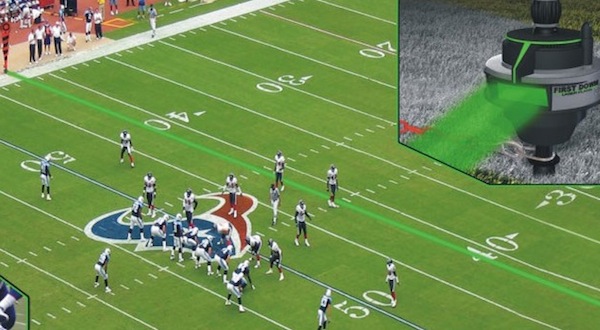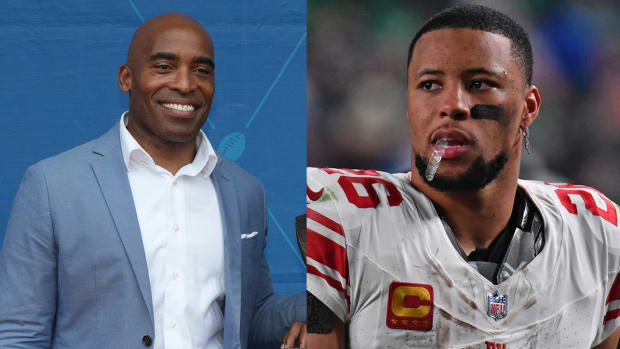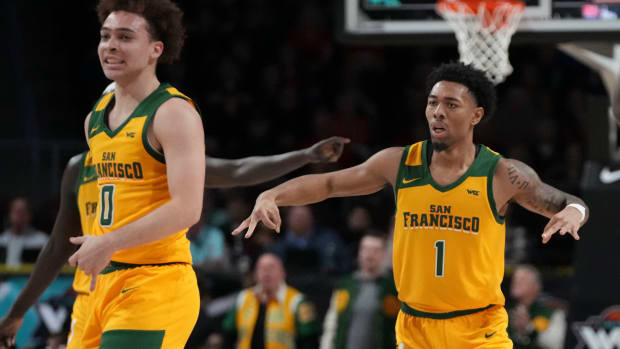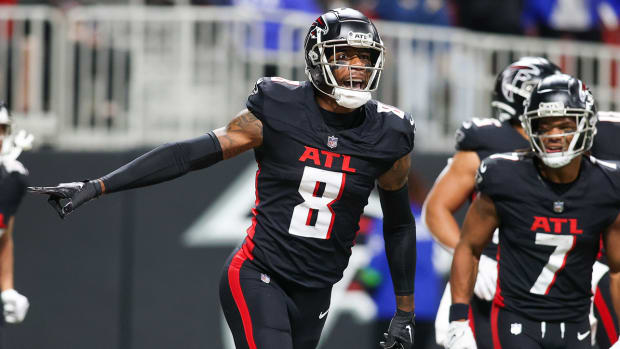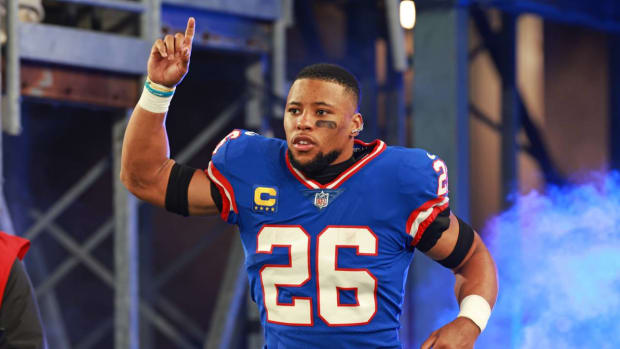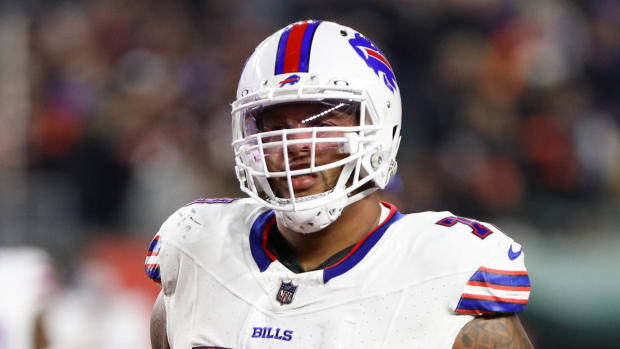NFL Fans Can See a Virtual First-Down Line On TV. Will They Ever See One at Games?
First Down Laser Systems
Earlier today, SI.com's Bill Squadron explored the development of football's yellow first down line—an now-invaluable piece of technology that is one of the (many) reasons that the at-home football-viewing experience is superior to the in-stadium one. Thing is, of all the causes for the flight of fans from venues, that reason in particular is one of the easiest to fix: For the past decade, inventor Alan Amron, with his company First Down Lasers, LLC, has been trying to convince the NFL that another first down beam innovation -- a green line visible on the playing field itself -- will help bring fans back to the stands.
The NFL has never shied from technology, particularly the kinds that serve the bottom line. Cases in point: the NFL has mandated for this season that every team have cameras its locker room (but be careful), and that every stadium show all replays available during a review on the video boards. The league knows that dwindling attendance is an issue, and is trying to be proactive. But they're still not sold on the on-field first down line.
"We are continuing to evaluate the technology," is all we heard from NFL spokesman Greg Aiello, who earlier this year told the AP, "We have not been convinced that it would work for us, but we are open to further discussion after the season." That means we're left to wonder what's not to like about the line (we say, as the Fox executive who green-lit FoxTrax puck tracker shakes his head furiously). But the First Down Lasers team is pressing on, making incremental progress in its quest to prove to the NFL that the green line is as good an idea as its yellow forebear. We spoke with Amron and Larry Weisman, the company's director of public relations, to learn more about the direction of their line.
SI: You've been at this for a decade. Where does your system presently stand?
Alan Amron: It has evolved considerably since I first presented the idea to the NFL in 2003. Initially it was a system that was mounted overhead, and it eliminated the need for the first down chains. But the NFL's competition committee told us, "We like the chains. We don't want to eliminate them—they build excitement." We've had meetings with the NFL since then, and based on their feedback we integrated lasers into the bottom of the actual first down flags. That made the system less expensive, didn't require installation, and doesn't eliminate the chains, which would still be used to confirm close first-down calls.
But the NFL still isn't giving any indication that they'll implement the technology. Where do you go from here?
Larry Weisman: Well, the AP did a story on Alan and the system this past January, which led to an outpouring of appearance requests from TV and radio outlets. Alan went to the Super Bowl to knock them all out at once.
Amron: Because of all the pub we got at the Super Bowl, the Canadian Football League contacted us and said, "We want to see the system, we think it will add something to the game." At the same time, we got a call from the USATF, which invited us to Hayward Field in Oregon to demonstrate the system for use as a leader line for track and field events. We hadn't even thought of that application. We went and demonstrated it, and they liked it so much they said, "We have a national championship in two weeks, can you be there with this?" We said "Absolutely not! Too soon." But then we got a call from someone persuasive, and we made it happen. It was a hit. What we saw was people CARING more. They were able to observe, "That's the furthest shot put throw, the next guy needs to beat that mark," or, "The long jumper needs to make it that far."
First Down Laser Systems
Weisman: We received very positive feedback from both meet organizers and fans.
Amron: Our next step is to resume talks with the CFL so we can show them, and other football leagues, how it works. We were supposed to make a presentation to the CFL before its season was over, but we got sidetracked by the USATF's invite. We believe that football is the most financially beneficial application.
Has any of the publicity or the showing in Oregon helped your cause with the NFL?
Weisman: Discussions with the NFL are ongoing. The league knows about our success at the track competition. We can't go into any greater detail about our talks, but we think the door is open.
Amron: In the meantime, the system is now being considered as an offsides line for soccer. Our cameras can detect and distinguish the players on each team, and then move up and down the field projecting the line. We've been talking with a team in Riga, Latvia, about going over and doing a demo. That should happen this summer.
First Down Line Systems
Are you using the same kind of laser for all these applications?
Amron: Yes, it's a 72-watt YAG laser. The reason we went with light green is because of the way it contrasts with a dark green playing field: The line shows up well from an aesthetic standpoint, but doesn't get in anyone's way visually. A green line is noticeable without being obtrusive, whereas a red line may distract people. But our line is still powerful—you can see it from the upper decks of a stadium, and from the opposite end zone. You can't miss it, really. Pat Summerall, may he rest in peace, was a business partner in this venture, and the first time he saw the line he said, "Whoa, that looks like a painted line moving up and down the field!"
This does seem to be a no-brainer, especially as bigger and sharper TVs give people an increasingly compelling reason to stay home.
Amron: The in-stadium fan experience has become one of the NFL's top priorities. They know the at-home experience is better.
Weisman: One thing that came up in a meeting with the CFL was the phrase "competition with the couch." That's the challenge facing these leagues. At a fan's home, they have no restroom lines and cheaper beers, but also that bright yellow first down line on TV. If you're sitting in the end zone at a stadium, you have no way of knowing whether a team got a first down.
Amron: The line can also help officials—not just in football, but also in soccer—and enhance player safety. If a football player knows exactly where the first down line is, he can tuck the ball when he gets close as opposed to stretching for a first down, or turning his head to look for a flag. So those are the benefits we can provide: Better fan experience, greater officiating accuracy, heightened player safety.
Weisman: Really, when we pitch the green laser line as a fan enhancement, we're just trying to give the league something they already provide for the masses watching at home.
Amron
